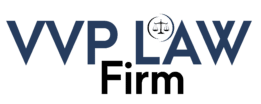Federal cases in Akron move fast, hit hard, and come loaded with complex rules. For anyone searching “Federal Criminal Defense Akron,” this guide walks through what actually happens inside the John F. Seiberling Federal Building & U.S. Courthouse and the broader Northern District of Ohio. It explains the charges most often filed, how federal procedures differ from state court, the investigative tools agencies use, and what the U.S. Sentencing Guidelines mean for real‑world outcomes. It also highlights 2025 trends, like evolving DOJ policies and digital forensics, that are reshaping how prosecutors build cases and how defense teams respond. If the stakes feel high, they are: See details below on the factors that matter most.
Common types of federal charges in Akron courts
Akron’s federal docket reflects national enforcement priorities filtered through local realities, major highways, parcel hubs, banks, and regional manufacturers. Cases typically originate with the FBI (Akron Resident Agency), DEA, ATF, HSI, IRS–CI, Postal Inspectors, and the Secret Service.
High‑frequency federal offenses
- Fraud and financial crimes: Wire/mail fraud, bank fraud, PPP/EIDL loan fraud, health care fraud, and identity theft. Investigations often hinge on bank records, emails, IP logs, and cooperating witnesses.
- Drug trafficking and conspiracies: Fentanyl, methamphetamine, cocaine, and prescription diversion, frequently charged as multi‑defendant conspiracies with potential mandatory minimums tied to drug weight. OCDETF task forces are common.
- Cybercrime: Business email compromise (BEC), ransomware facilitation, crypto‑related laundering, and intrusions. Expect blockchain analysis and cloud‑provider data.
- Firearms offenses: Possession by a prohibited person, straw purchases, and 18 U.S.C. § 924(c) counts (using/carrying a firearm during a drug trafficking crime or violent crime), which can stack mandatory consecutive time.
- Public corruption and bribery: Occasionally brought when local conduct implicates federal funds or interstate communications.
- Child exploitation: Production, distribution, and receipt of child sexual abuse material (CSAM), which carry severe penalties and intensive forensic work.
While Summit County state court handles the bulk of criminal matters, conduct involving interstate communications, federal programs, or multi‑state activity often lands in federal court, where resources and penalties are markedly different.
Differences between state and federal criminal processes
People are often surprised by how different federal court feels from state court. The pace, paperwork, and leverage points change.
Key procedural differences
- Charging: Federal cases usually start with a sealed complaint and quickly move to a grand jury indictment. A grand jury can subpoena documents and witnesses early, quietly shaping the case.
- Detention decisions: The Bail Reform Act governs release and detention. Pretrial Services prepares a report that weighs risk of flight and danger: drug and gun cases see frequent detention requests.
- Discovery: Rule 16, Brady/Giglio, and the Jencks Act structure disclosures. Witness statements (Jencks) often arrive close to trial, compressing preparation. Protective orders are common.
- Plea dynamics: Over 90% of federal cases resolve by plea. Agreements may be under Fed. R. Crim. P. 11(c)(1)(B) (non‑binding recommendation) or 11(c)(1)(C) (binding if accepted by the judge).
- Speedy Trial Act: A nominal 70‑day clock exists, but in complex cases the parties often agree to exclusions for voluminous discovery or motion practice.
- Rules and formality: The Federal Rules of Criminal Procedure and Evidence are strictly applied. Hearings are shorter, more focused, and heavily briefed.
In short, the federal process gives prosecutors more tools up front and leaves much of the real leverage, the Guidelines calculation, until sentencing. That shapes strategy from day one.
Investigation methods unique to federal cases
Federal investigations are built for the long game. Agencies layer techniques and task‑force resources to quietly assemble proof before an arrest ever happens.
Common federal tools and tactics
- Grand jury subpoenas: Compel documents and testimony. Targets may receive a target letter indicating exposure, which is a critical moment to retain counsel.
- Title III wiretaps and pen registers: Interception of calls or messages requires high judicial scrutiny but can be decisive in drug, fraud, or corruption probes.
- Digital and cloud evidence: Warrants under Rule 41 and the Stored Communications Act (18 U.S.C. § 2703) obtain emails, social‑media content, and cloud files. Expect device imaging and forensic extractions.
- Financial tracing: IRS–CI, FinCEN queries, SAR follow‑ups, and bank subpoenas map money movement. In crypto cases, blockchain analytics link wallets to transactions.
- Undercover operations and informants: Controlled buys, covert recordings, and cooperating witnesses (often facing their own exposure) generate human intel and corroboration.
- Multi‑agency task forces: OCDETF (narcotics), JTTF (national security), and Cyber Task Forces combine expertise and resources across jurisdictions.
- International process: MLAT requests and CLOUD Act mechanisms obtain overseas data when platforms or evidence sit outside U.S. borders.
Because these tools can generate terabytes of discovery, defense counsel in Akron federal cases often push early for preservation letters, forensic protocols, and rolling productions to keep pace and spot suppression issues.
Sentencing guidelines and their impact on outcomes
The U.S. Sentencing Guidelines are technically advisory, but they anchor the conversation. Judges must calculate the guideline range, then consider 18 U.S.C. § 3553(a) factors before imposing sentence.
How the Guidelines work in practice
- Base offense level + enhancements: Loss tables in fraud, drug weight in narcotics, number of images in CSAM, firearms connections, “sophisticated means,” leadership role, vulnerable victims, these can move the range dramatically.
- Criminal history: Prior convictions slot a person into Categories I–VI. Recent amendments reduced some “status points,” but priors still matter.
- Acceptance of responsibility: Pleading early and truthfully can reduce the offense level by up to three levels.
- Mandatory minimums: Statutes like § 841 (drug) and § 924(c) (firearm) can override lower guideline ranges unless relief applies.
- Safety valve: After the Supreme Court’s 2024 decision in Pulsifer v. United States, more defendants are disqualified if they meet any of the listed criminal‑history bars, limiting relief from mandatory minimums in drug cases.
- Cooperation and departures: Substantial assistance motions (§ 5K1.1) or post‑sentencing Rule 35(b) can unlock reductions: mitigating role or over‑represented criminal history can also support departures.
- Acquitted conduct: A significant 2024 Sentencing Commission amendment curtails the use of acquitted conduct in calculating guideline ranges, influencing sentences imposed in 2025 and beyond.
Restitution (especially in fraud), forfeiture, and supervised release conditions often follow, so advocacy doesn’t end at the term of imprisonment.
Key challenges in defending federal charges
Defending a federal case in Akron isn’t just about arguing facts: it’s about managing risk at every procedural turn.
What makes these cases hard
- Early leverage is with the government: By the time of arrest, agents may have wiretaps, cloud data, and cooperators lined up.
- Digital and forensic complexity: Device extractions, chain‑of‑custody questions, and expert‑heavy analytics demand budget and time.
- Conspiracy law and Pinkerton liability: A person can be held accountable for acts of co‑conspirators if reasonably foreseeable, inflating guideline exposure.
- Mandatory minimums: Even small roles can face big time if drug weight or firearm counts are in play. Charging decisions matter enormously.
- Discovery volume and timing: Late Jencks disclosures compress cross‑examination prep: protective orders limit data sharing.
- Detention pressures: Pretrial detention can strain families and impede defense work, increasing incentive to plead.
Effective defense teams prioritize: early case assessment: targeted motions to suppress or sever: forensic counter‑analysis: careful proffer strategy: and sentencing mitigation that humanizes the client and challenges guideline math.

